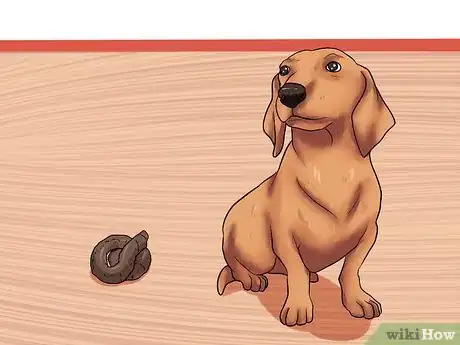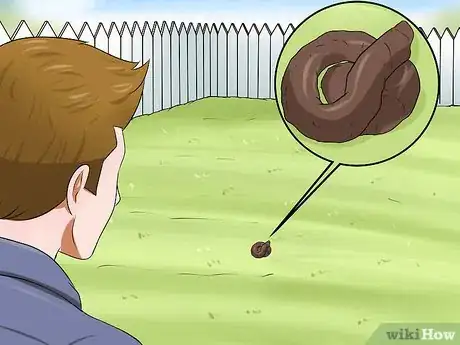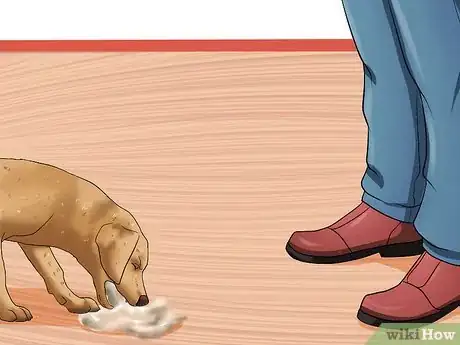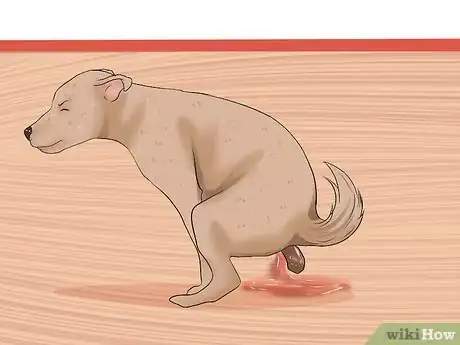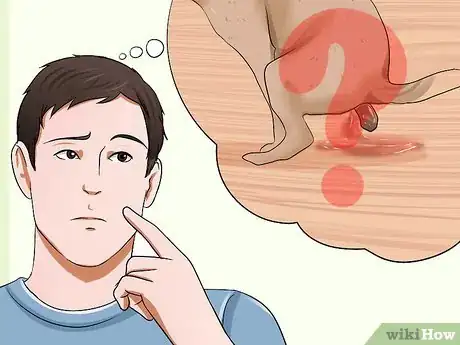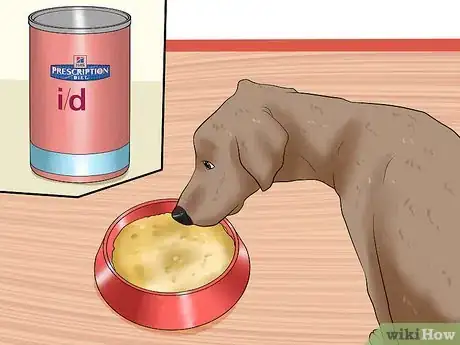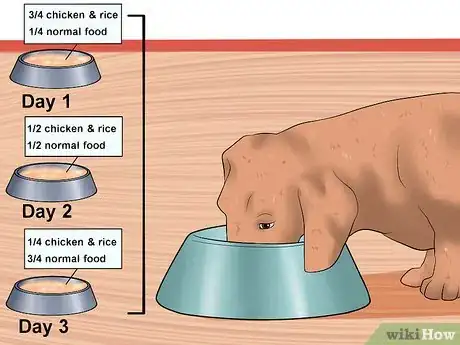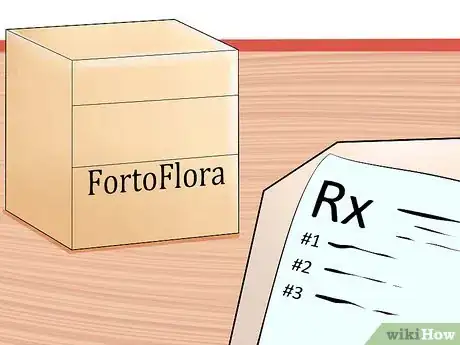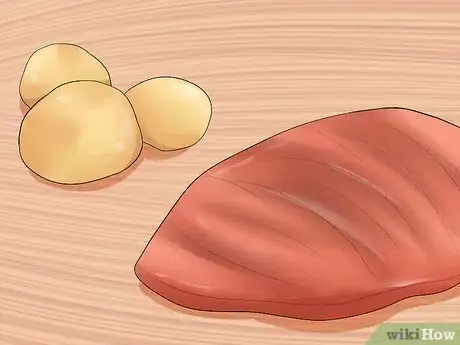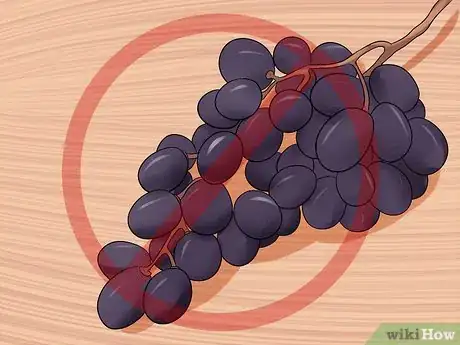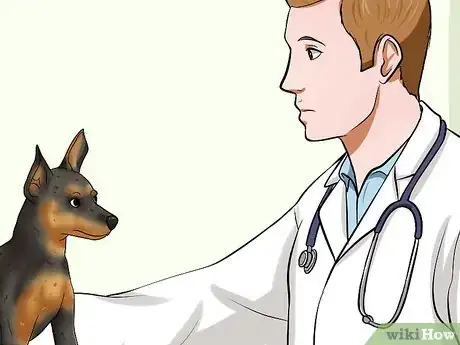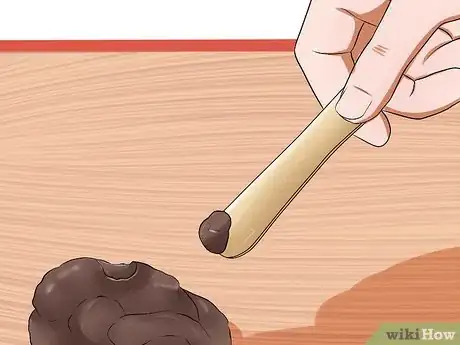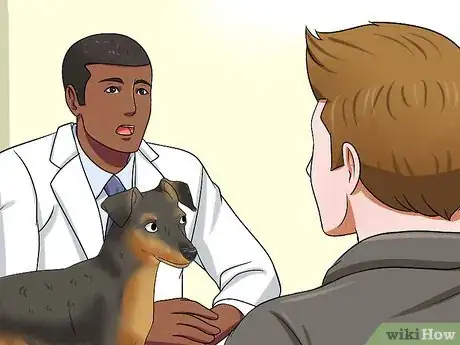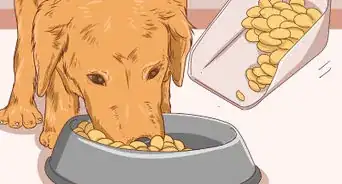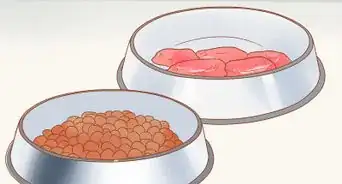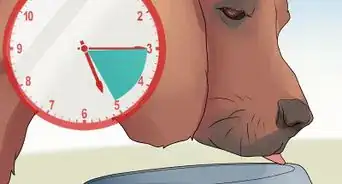This article was co-authored by Natalie Punt, DVM. Dr. Natalie Punt is a Veterinarian and the Founder and CEO of mPet- a smart phone app for pet owners to store, manage and transfer their pets medical records and health information. She specializes in small animal emergency and general medicine and veterinary practice economics. Dr. Punt holds a BS in Biochemistry and Molecular Biology from The University of California, Davis, an MS in Biochemistry from The University at Buffalo, and a DVM from Western University of Health Sciences.
This article has been viewed 18,804 times.
Digestive problems in small dogs can range from soft feces to diarrhea, vomiting, and flatulence. Because of their smaller size, these dogs sometimes lack the robust constitution of bigger canines. It's important to be vigilant and address any problems early, rather than risk your small dog becoming seriously ill.
Steps
Identifying Digestive Problems in Your Small Dog
-
1Be intimately acquainted with your small dog's regular toileting habits. A healthy digestive system produces a formed stool which can be picked up. Dogs usually move their bowel after eating, so if your dog is fed twice a day, their natural tendency is to toilet twice a day - although individual variation occurs and if it is normal for your dog to go once or three times a day, then that's fine.[1]
-
2Be vigilant about what they are producing. If you let the dog out into the yard and for days on end never check what they've produced, this can mean you miss the early stages of a digestive upset. Do a daily poop patrol so that you are aware of changes in consistency and color, and know if blood or mucus is present.Advertisement
-
3Monitor your dog for vomiting. If the dog vomits, take note of the color and consistency. An occasional barf is nothing to be concerned about, but if the dog seems unwell and vomits, he repeatedly retches and doesn't bring anything up (a sign of bloat) or vomits repeatedly over the course of a few hours, then you should seek veterinary attention. In the meantime, whilst you are waiting for the appointment, take his food away but leave water down. It is best to rest the dog's stomach.
-
4Know the signs of digestive problems. Indications that your dog may have a digestive problem include its feces becoming runny or liquid, the presence of blood or mucus in the feces, repeated straining to move his bowel, and increased frequency of passing a motion. If necessary, take a photo of your dog's abnormal bowel movement as it is helpful for your veterinarian to see the consistency for himself.
Treating Mild Digestive Problems at Home
-
1Assess whether your dog's digestive issues are serious. A "well" dog with a funny tummy can usually be treated at home. If your small dog has a disturbed digestion but is perky and asking to eat, then you can try to solve the problem before calling the vet.
- If the problem persists beyond 24 hours, or the dog deteriorates and becomes unwell, then reassess the situation and call the vet.
-
2Remove food for 24 hours, but leave water down. Check the dog is drinking (the water level goes down in the bowl if you don't actually catch him in the act of drinking), which helps him avoid dehydration. If the dog has diarrhea (liquid stools) and refuses to drink, there is a risk of dehydration so phone the vet for advice.
- If the digestion issues seem to resolve themselves within 12 to 18 hours, you can try introducing a bland diet with small pieces of boiled turkey or sweet potato.
-
3Introduce a bland diet after 24 hours of starvation. Feed an easy to digest food that is easy on the stomach and easier for the bowel to digest. A common home prepared diet is chicken and rice. The ratio of rice to chicken is 2 to 1, which means you give 2 cups of rice to every one cup of cooked chicken.
- Feed little and often, so four small meals should be spaced over the day.
- Alternatively, you can source prescription foods that are designed to ease stomach upsets, from your vet. These include Hills ID, and Purina EN.
- Since a growing number of dogs have chicken allergies, if the problem persist, try changing it to turkey.
-
4Feed a bland diet until the dog's stools have firmed up. Be aware the volume of stool will be smaller than usual, as so much of the food is digested. Once your dog has produced formed stool for 1 - 2 days, then gradually transition back onto a regular diet.
- To do this start by adding in a small amount of the regular food. For example, on switch-over day one, give your dog ¾ chicken and rice with ¼ normal diet. On day two your dog gets ½ and ½, on day three it gets ¼ chicken and rice with ¾ regular food, and then fully onto your dog's normal diet on the fourth day.[5]
-
5Consider asking your vet for a probiotic suitable for dogs, such as Fortiflora. Sometimes when a dog has an upset stomach it loses the bacteria that aids digestion and gets an overgrowth of bacteria that interferes with digestion. Your dog could need a course of antibiotic to correct the imbalance, but it might be corrected by a course of doggy probiotic. [6]
- Fortiflora is a powder and comes in sachets. You mix one sachet a day for 5 days with the dogs food. You should see an improvement within this time frame if the problem is due to an bacterial imbalance.
- Human probiotics contain different bacteria to those found in the dog gut and are unlikely to be helpful.
-
6Consider trying a hypoallergenic diet. This is a diet that consists of one protein source (a meat) and one carbohydrate (potato, pea, or rice) that the dog has never eaten before. This diet is fed exclusively (nothing other than this) for 8 - 12 weeks.[7] The idea behind this diet is that any allergens or ingredients the dog was intolerant to pass out of the system, and the new protein and carbohydrate do not trigger the same response. It can take around 8 weeks for the inflammation caused by a dietary allergy or intolerance to settle down, so this won't be a quick fix.[8]
- At the end of this time the dog should have a normal stool, have a glossy coat, and regained lost weight.
- If the dog's bowel movement still doesn't improve then dietary allergy is less likely. At this stage he or she really must see a vet.
-
7Know what not to feed your dog. Do not feed your dog people food. It's especially important not to feed your dog fried foods, grapes or raisins and their products, dates or dried fruits, olives or their oils, chocolate, and tropical fruits or their oils unless the vet gives the OK. Also avoid wheat, gluten, and soy ingredients if you can; these can cause digestive issues in sensitive canines.
Consulting a Veterinarian About Digestive Problems
-
1Decide if your dog's digestive problems are bad enough to warrant a visit to it's vet. If your small dog lacks energy, refuses to eat, passes blood-stained stools, or has a poor appetite and is losing weight, then he or she should see a vet. These could be signs of a severe medical issue.
- If the problem is long term, lasting for several days or weeks, and your dog is fed regular dog food (and you are unable to get to a vet) consider changing his diet. Some dogs have a dietary intolerance and cannot properly digest some of the ingredients in their food.[9]
-
2Take along a fecal sample to the consultation. Your vet may want to send it away for analysis and culture to see if any parasites or gut infections are present. This can then point to a specific course of treatment, such as fenbendazole for coccidial infections, or antibiotics for giardia or campylobacter.
-
3Follow any directions for treatment your vet gives. There are a variety of possible diagnoses your vet may give and all of these will have specific treatments. Along with the fecal sample, your vet may take a blood sample to test for common health problems that lead to problems with digestion.
- Digestive problems in small dogs can be caused by EPI (exocrine pancreatic insufficiency). This is a lack of the digestive enzymes necessary to digest fat, and can lead to cow-pat like, rancid stools. Your vet can diagnose this using a blood test and the treatment is a pancreatic enzyme replacement powder sprinkled on your dog's food.[10]
- Another common issue is low levels of B vitamins in the bowel wall. B vitamins are vital to good appetite and healthy digestion and sometimes the levels do fall. Again, this is diagnosed with a blood test. The B vitamin needs to be boosted up by four, weekly injections. Unfortunately, oral supplements are less effective because the stomach acid is likely to destroy them.[11]
Warnings
- Don't change your dog's food too quickly, this could cause additional digestive issues.⧼thumbs_response⧽
Expert Interview
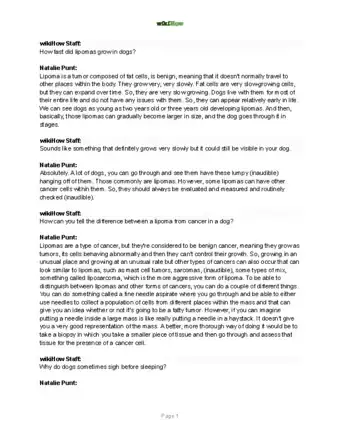
Thanks for reading our article! If you'd like to learn more about taking care of a dog, check out our in-depth interview with Natalie Punt, DVM.
References
- ↑ Small Animal Nutrition. Agar. Publisher Butterworth-Heinemann.
- ↑ Small Animal Nutrition. Agar. Publisher Butterworth-Heinemann.
- ↑ Purina Veterinary Diets, Fortiflora information
- ↑ Small Animal Internal Medicine. Nelson & Couto. Publisher: Mosby.
- ↑ Small Animal Internal Medicine. Nelson & Couto. Publisher: Mosby.
- ↑ Small Animal Internal Medicine. Nelson & Couto. Publisher: Mosby.
- ↑ Small Animal Internal Medicine. Nelson & Couto. Publisher: Mosby.
- ↑ Small Animal Internal Medicine. Nelson & Couto. Publisher: Mosby.
About This Article
If you've noticed signs of digestive problems in your small dog, like runny or liquid feces, strange-colored feces, or difficulty defecating, try removing its food for 24 hours to settle its stomach. Just make sure you leave its water dish out so it doesn’t get dehydrated. After 24 hours, try reintroducing bland, easy-to-digest food like chicken and rice in small portions, 4 times a day. If your dog is lethargic, refuses to eat, or has blood-stained stool, its digestive problem may be more serious and you should see the vet. Once your vet diagnoses your dog, they may test for vitamin deficiencies and prescribe supplements if necessary. To learn how to take a stool sample for your vet visit, read more from our Veterinary co-author.
